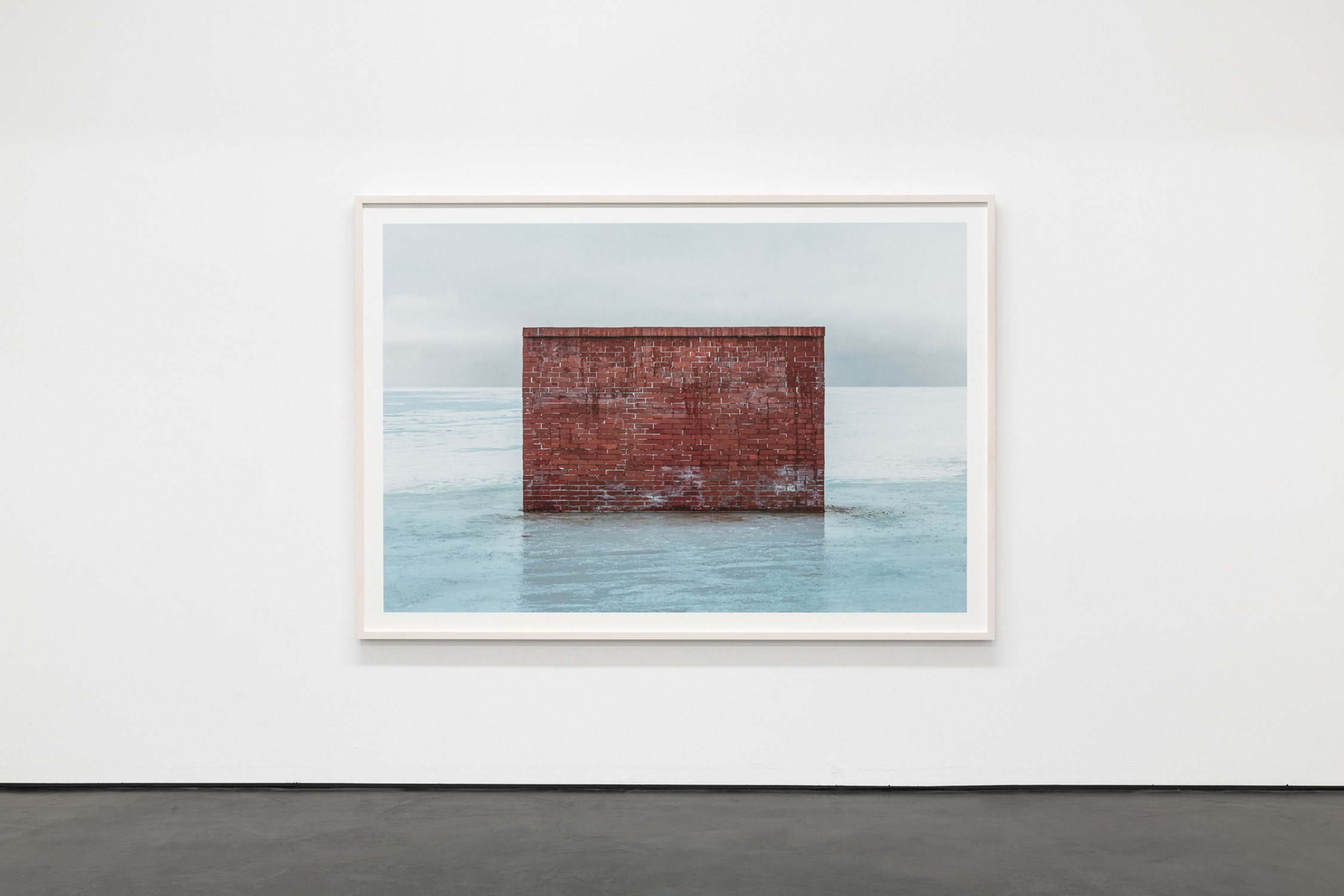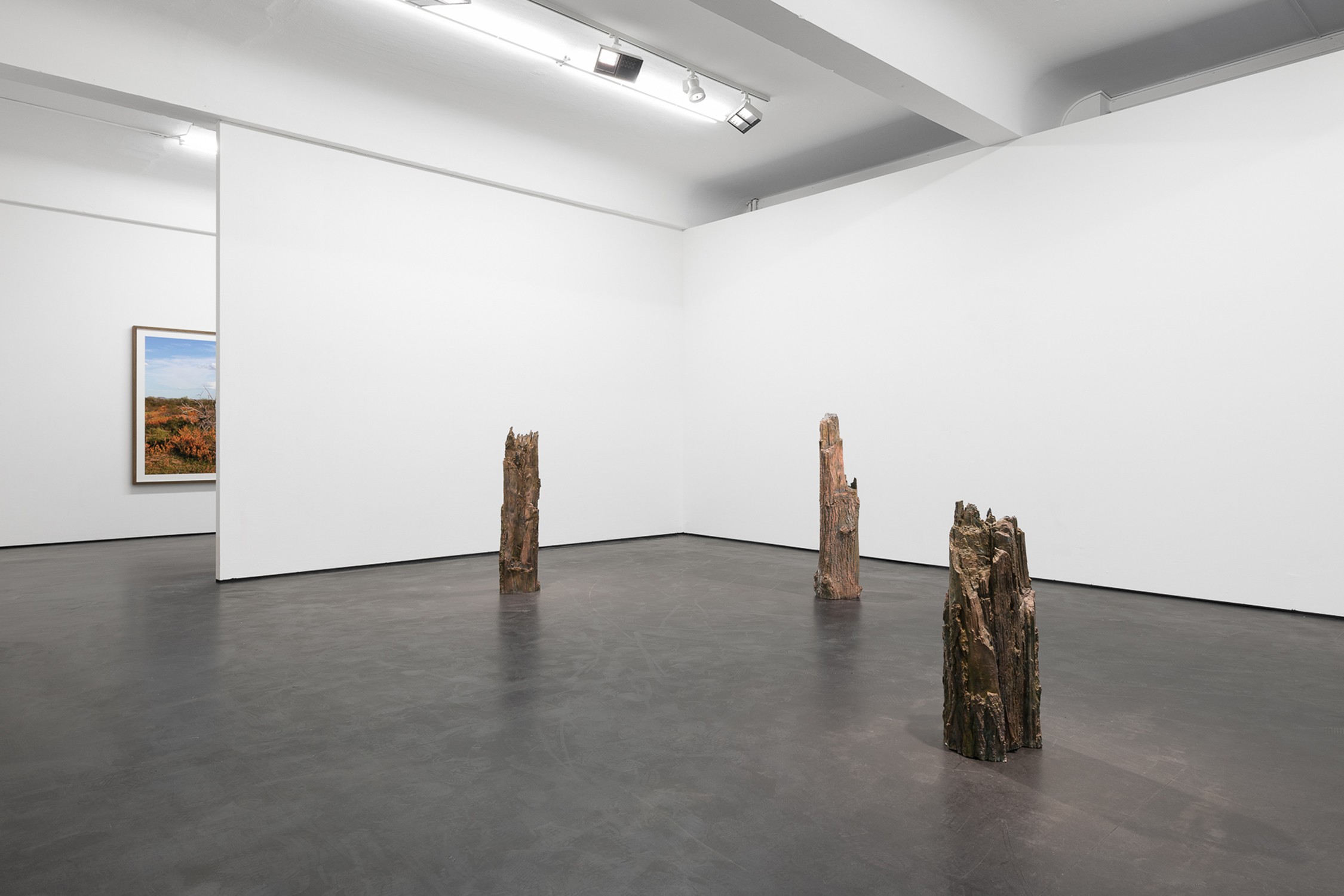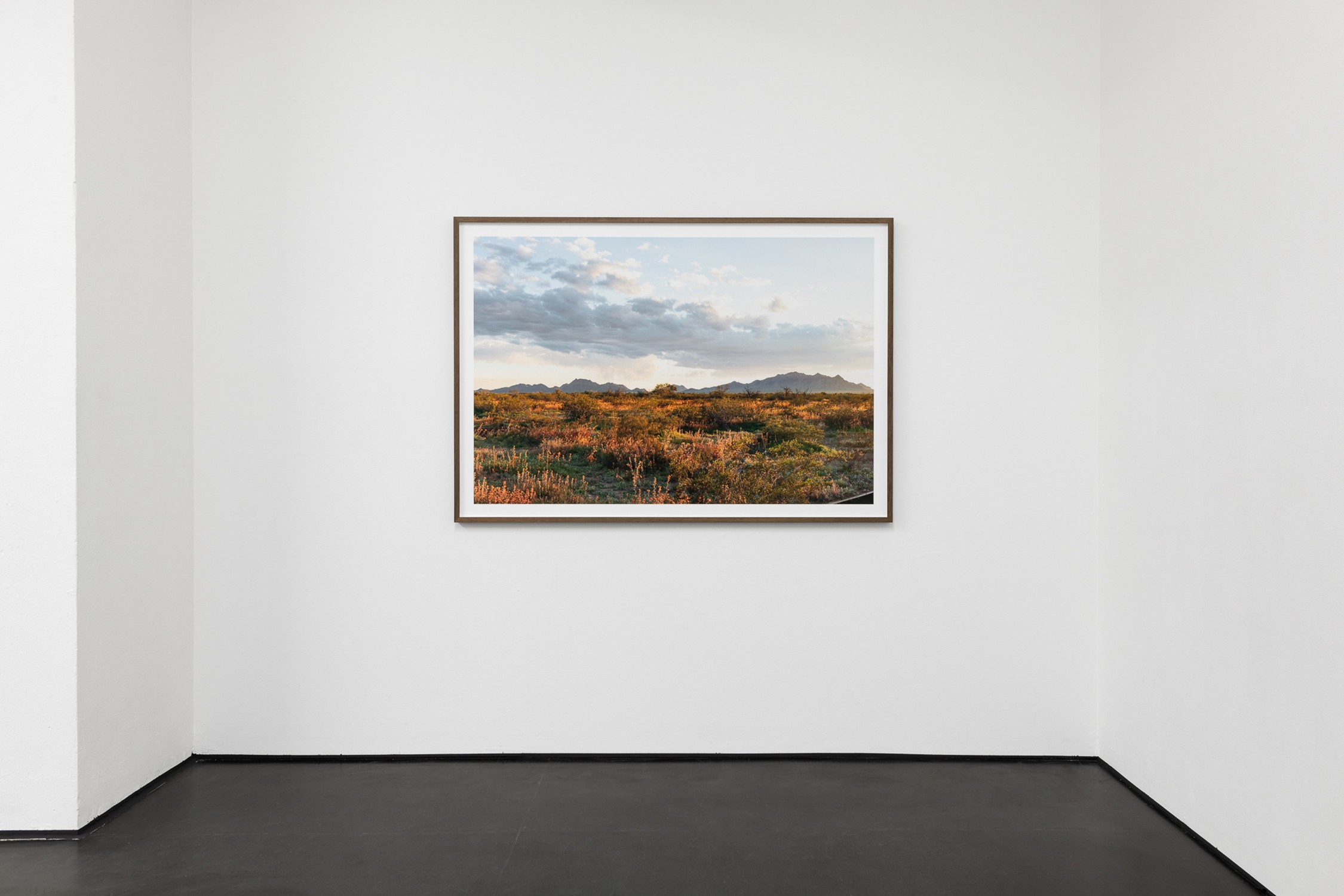





Ironic and direct upon first glance, Fabian Knecht’s bronze sculptures and large photographs share a deeply conceptual and uncompromising approach that questions the notion of time and collapse in a world of permanent crisis. From removing trunks in the German forest, building a wall on the icy Baltic Sea or covering and “renaturalizing” an open rift in Arizona, Knecht’s performative process shares a radical vision, questions the fragility of a system, and the apparent opposition between the natural and artificial. The situations created from the artist’s choice of site and his own intervention render a fragile equilibrium, permanently on the verge of rupture. Knecht’s choice of the German word “Bruch” (fracture, failure, break, fissure) as title of his solo exhibition at alexander levy’s gallery evokes directly this perspective of destruction, demolition and fracture; but here, beyond aestheticizing disaster, it evokes tension between the fragile and the solid, the “natural” and the “artificial”, the ephemeral original and its everlasting copy that become the signifiers of a future collapse.
Entering the gallery, we see three tree trunks placed in the middle of the room, the debris from a storm. Apparently blown off by the wind, they have lost their crowns, their majestic heights. After removing the trunks, Fabian Knecht has reproduced them as unique sculptures in bronze. In casting them into bronze, Fabian Knecht makes the tree trunks undergo a material transformation. Its’ natural transformation- and decay process is put into halt, the site of fracture eternalized. Bronze embodies value, but foremost longevity and remains a promise for a long-term future. But here, uprooted, left without an anchor, they appear as aesthetic surrogate on a slippery floor.
An even more precarious effect is left by a five-ton brick wall depicted in a photography, which is placed alongside the bronze sculptures. Framed perfectly in the center of the image, the man-made construction impedes our view of the horizon. It creates a tension in the landscape that renders a sense of the sublime: the aesthetic beauty produced by the contrast between the red brick wall and the layer of ice it stands on is charged with the danger presented by the eventual melting of the frozen surface. Beyond the association of both motifs that recall a political situation opportune to wall builders and the environmental reality of global warming, it is foremost the choice of the location that triggers wonder: What is this foreign body, this artificial barrier, both intriguing and disturbing, doing there?
The title of the work “Grundmauer” (foundation wall) highlights this question. Fundamental elements of construction, foundations are strong platforms built below ground level, where they won’t sink; a building with a foundation can “stand” securely. Here, the entire structure seems not only to have been built with a total absence of landmark, but without having respected basic engineering precautions—a failure that condemns the whole situation to remain as only a single framed image. Of course, this picture by no means testifies to its actual existence, which is most probably already victim of the elements and the passage of time. A photograph, more than representing the real, highlights the lapse of time between the shooting of the image and the moment one looks at it. Although Knecht’s photograph presents no obvious flaws in the wall, the interaction between ice, water, and bricks appears as the manifestation of an assured destruction. By the logic of entropy, the index of any construction is also the promise of its collapse. Its speed depends, however, on one’s engineering knowledge and of the clemency of the elements: a necessary and permanent negotiation between humanity and nature.
The anthropogenic impact and the potential failures appear less directly in the two pictures from Knecht’s series “Grundriss”. The entire setting and the man-made action seem even at first sight hidden, or disguised. At first, one could assume these are simply skillfully taken landscape photographs that have caught an instant of light that renders sharply the bright oranges and greens of the vegetation. Nevertheless, in the images, the darker areas reveal an opening into the earth under the lush greenery. What we might identify a little crack in the ground is in fact a one and a half kilometers-long jagged fissure in the earth, which opened within less than one year, twenty kilometers south of Arizona city, a phenomenon that correlates with an excess of groundwater withdrawn for agriculture purposes. Using this geological event as a starting point, in a performative gesture Knecht covered part of this fissure with large boards before hiding those boards with earth and vegetation from the immediate surroundings, masking it in the artificial prolongation of the habitual biotope. He creates a trap, in a sense transforming the drama of this radical break in the landscape into the promise of a new failure. In his action of disguising the geological consequences of human exploitation of the earth, he creates a situation that risks any human or non-human falling into the fissure. The photograph becomes not only the testimony of a rarely evident and direct manifestation of humanity’s impact at a geological scale but also the trigger of potential catastrophes, new traumas to come. After the collapse is before the collapse. It is only a question of time.
Text by Bernard Vienat
Photos by Trevor Good